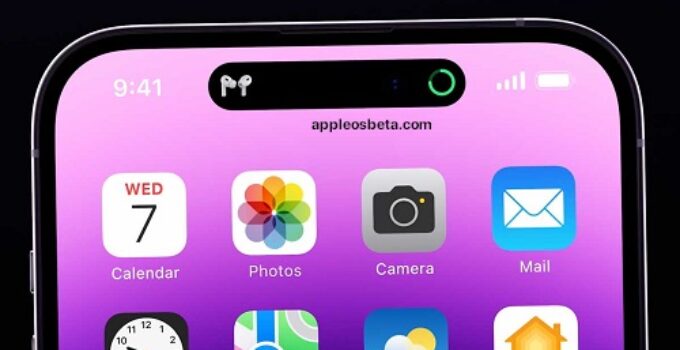Dynamic Island with Face ID under the screen in the Apple patent. An Apple patent granted today appears to describe a new approach to under-screen Face ID, which could also allow the company to embed additional sensors into an iPhone’s display.
Apple prepares Beats Fit Pro in new colors
The patent seems to describe the evolution of the Dynamic Island, which it would prohibit even more flexible. With the iPhone 14 Pro models, Apple switched from a Face ID built into the front notch, to two cutouts within the display itself. In fact, although there are two cutouts, Apple has chosen to mask them in a single, dynamic, pill-shaped cutout that stretches and shrinks depending on the functions in use.
The long-term goal of the company, however, is to get an under-screen Face ID, which does not take up screen space. In this regard, Apple already holds a number of patents for Face ID and Touch ID under the screen, but the possibility of completely hiding them still remains a long way off, certainly not ready for the iPhone 15, as initially speculated.
However, a new patent granted today describes what appears to be an evolution of the Dynamic Island approach. First, the patent describes a variety of sensors that could be incorporated into the display, including those for detecting gestures without actually touching the screen.
Under-display sensors that may be hidden include those for Touch ID, sensors for measuring non-contact three-dimensional gestures, pressure sensors, sensors for detecting location, orientation and/or movement (for example, accelerometers, magnetic sensors such as compass sensors , gyroscopes and/or inertial measurement units that contain some or all of these sensors
Under-display components may also include optical sensors such as auto-mixing sensors and light range and detection sensors (lidar) that collect time-of-flight measurements, humidity sensors, humidity sensors, tracking sensors, and/or other sensors
Secondly, the position of the dynamic island could vary, using a series of tiny transparent windows whose apparent size and position can be effectively moved around the display, selectively turning different pixels on and off.
Transparent windows can be moved a random amount in a random direction relative to a grid definition point and/or can be rotated randomly. A transparency gradient can be formed between transparent windows and the surrounding opaque part of the display. Transparent windows can be defined by non-linear edges
Apple explains that a typical display used by its devices has 13 layers and that light transmission through these areas is reduced by up to 80%, and therefore it may be necessary to reduce the number of layers in areas containing the under-screen sensors.
The approach appears to describe a method of distributing these areas so as to make them invisible to the naked eye; without interfering with performance, thus without decreasing touch sensitivity. Additionally, Apple will need to find a way that allows nearby pixels to be selectively turned off to increase light transmission.



